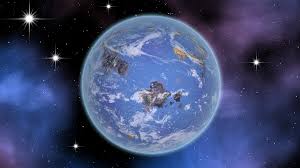‘Water Worlds’ common In Milky Way

Islamabad: Many of the 4,000+ planets so far discovered in distant star systems in the Milky Way are “water worlds” according to new research.
The study into the distribution of planet sizes in other systems concludes that many planets found that are bigger than Earth, but smaller than Neptune, may be “water worlds”. It comes days after scientists also found cold gas giant planets.
“Statistically speaking, these water worlds may be more abundant than Earth-like rocky planets,” says Li Zeng, Simons Postdoc Fellow at Harvard University, whose Growth model interpretation of planet size distribution paper was published in the journal PNAS. Its simulations suggest that sub-Neptune exoplanets, which have radii two to four times that of Earth, likely contain at least 25% ices or fluids. It had been thought they were gas dwarfs with a rocky core surrounded by a gaseous envelope. “Perhaps every typical sun-like star has one or more of these water-worlds … perhaps our solar system is less typical,” says Zeng.
Planetary system architecture is radically different in the cosmos, leaving the solar system looking unusual, not typical.
At least one thousand, and that’s just in 4,000+ exoplanets found by the Kepler Space Telescope, which gathered data from a few areas of the Milky Way between 2009 and 2018.
“Due to the geometry of the transiting method, we can only see planetary systems with their orbital planes aligned along our line-of-sight,” says Zeng, who adds that there will be many more hidden planetary systems out there. “The current estimate is that every star in our galaxy has its own planetary system … planet formation is a universal physical process accompanying star formation.”
Zeng stresses that what Kepler has found, and what the TESS all-sky survey is already finding, is just the tip of the iceberg.





